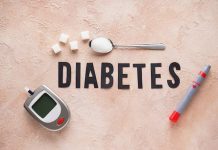Diabetes mellitus, popularly known as diabetes, is the most common disease worldwide. Diabetes is increasing rapidly, and nearly 1.5 million Americans have been diagnosed with diabetes every year. Long-term diabetes can damage your kidney, eyes, feet, nerves, and it can even lead to heart attack and stroke! Recent research says that nearly 50% of young type 2 diabetes patients suffer from eye damage.
Diabetes Eye Problems
High levels of diabetes i.e, if your blood sugar or blood glucose is too high can lead to blindness. Diabetic eye problems include diabetic retinopathy, diabetic macular edema, cataracts, and glaucoma.
Diabetic Retinopathy– Retina is a thin tissue at the back of each eye. The retina is light-sensitive and it turns light into signals that your brain decodes. For a clear vision, you need a healthy retina. Diabetic Retinopathy damages the tiny blood vessels. In the earlier stage, blood vessels weaken, bulge, or weaken. This stage is known as nonproliferative diabetic retinopathy. Over time, the disease can get worse leading to severe vision problems.
Diabetic Macular Edema– Macular edema occurs when abnormal leakage in the macula (an area in the center of the retina) builds upon the retina and causes swelling and blurry vision. This condition can lead to blindness. Diabetic retinopathy is the common cause of diabetic macular edema.
Cataracts– People with diabetes are not more likely to develop cataracts, but it can occur at a young age than people without diabetes.
Glaucoma– Glaucoma affects the eye optic nerve, and it can even get worse over time. Diabetic patients have a higher risk of glaucoma. Blood vessels in the retina are damaged in some cases of diabetic retinopathy.
How Can You Tell If Diabetes Is Affecting Your Eyes?
Initially, there won’t be any symptoms of diabetic eye disease. You won’t experience any pain or change in your vision as the damage grows inside your eyes.
Diabetes Eyes Symptoms
- Blurry or wavy or double vision
- Frequent change of vision
- Poor color vision
- Dark or floating spots
- Flashes of light
- Trouble seeing things
- Pain or pressure in the eyes
Diabetes eye floaters and diabetes bloodshot eyes are also the major symptoms. If you face any above-mentioned symptoms consult your ophthalmologist immediately!
How to Protect from Diabetes Eye Problems?
To prevent and to keep it from getting worse, you should manage your diabetes ABCs. What is diabetes ABC? Diabetes ABC refers to HbA1c blood test, blood pressure, and cholesterol.
A dilated eye exam is the best way to check diabetes eye problems. We advise diabetes patients to take a complete eye exam once a year. Take better care of your eyes, and it’s never too late to begin. The sooner you are treated, the greater your chance of recovery.
SHYNG010-CoralWhite, SHYNG017-WhiteGrey, SHYNG013-WhiteCoral
smb://192.168.9.4/shyawayshare/Content%20Writing/Swetha/shoot/Nightwear/Shyaway%20July569.jpg
SHYNG004-MustardYellow


















